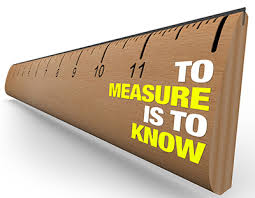"Access to capital was the key differentiator in the 1990's, but a strong fabric of relationships is the major source of distinction in the 21st Century," Lord Browne, former Group Chief Executive BP
Researchers in social sciences and communications have isolated and ranked several attributes to define an organization's relationships with its various stakeholders. Understanding and measuring the attributes of what researchers call "exchange" and "shared relationships" are essential to managing these relationships more strategically. The four main attributes are:
- Control is the degree to which the parties agree on who has the power to influence the other. Stable relationships require that each party have some control over the other, although some imbalance at any one time is natural.
- Trust is the level of confidence in and willingness to open oneself to the other party. Three essential elements of trust can be measured independently:
- Integrity is the belief that a company is fair and just in its interactions.
- Competence is the belief that a company has the ability to what it says it will do.
- Dependability is the belief that the company actually will do what it says it will do.
- Satisfaction is the extent to which each party feels favorably toward the other because positive expectations about the relationships are reinforced. In a satisfying relationship, the benefits outweigh the costs.
- Commitment is the extent to which each party believes and feels that the relationships is worth investing time to maintain and promote.
What's the Value?
Quality relationships build trust with key stakeholders, saving the organization money by reducing the costs of litigation, legislation, pressure campaigns, boycotts or lost revenue resulting from bad relationships. Quality relationships with employees means lower turnover and increases the likelihood employees will be satisfied with their jobs and the company. Organizations that communicate effectively with key stakeholders develop better relationships with key publics. As a result, management and stakeholders better understand one another, and both are less likely to behave in ways that have negative consequences for the other.

Enhance, Extend and Build
A strategic approach to relationship building allows you to identify, meet with and influence key stakeholders and decision-makers. It helps identify allies by raising awareness, promoting exploration and discussion. It earns trust, prompting people to view you and your company as experts, as leaders, as worthy partners.
A key step is to qualify and quantify relationships, while discovering the qualities that make some relationships better than others. By identifying the attributes of your best relationships. you can better focus your efforts to weave a rich, vibrant fabric of quality relationships.



/Passle/5f6edd8e8cb62a0bec3e5fd2/SearchServiceImages/2025-09-11-17-02-51-670-68c300bb2b4d83f984228268.jpg)
/Passle/5f6edd8e8cb62a0bec3e5fd2/SearchServiceImages/2026-01-08-20-00-27-348-69600cdb926708f4004e1137.jpg)

/Passle/5f6edd8e8cb62a0bec3e5fd2/SearchServiceImages/2026-01-06-14-22-53-593-695d1abd5e53f47fe01ca516.jpg)